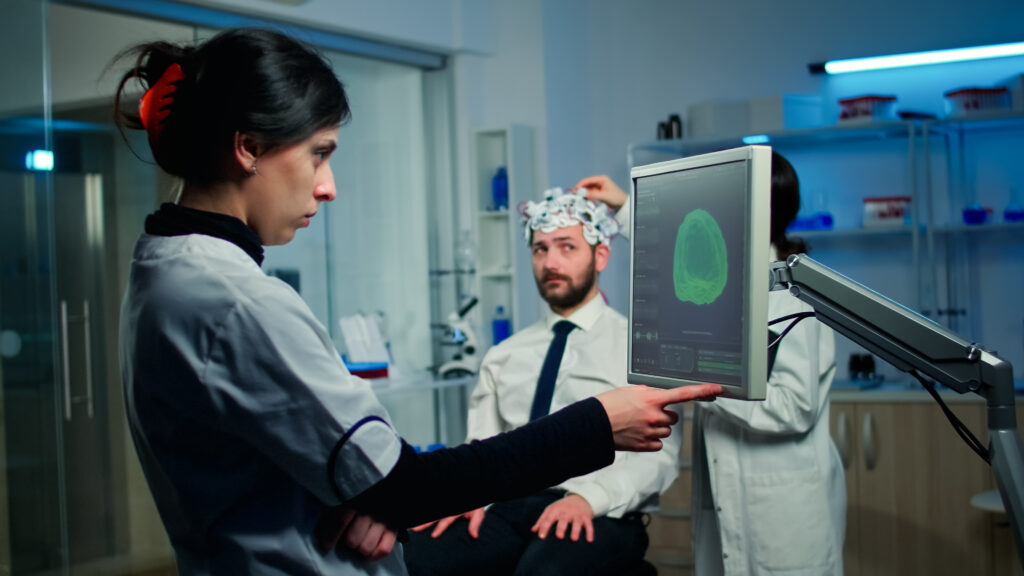In the realm of medical innovation, few advancements have been as revolutionary as deep brain stimulation (DBS). This remarkable technology has proven to be a game-changer for patients suffering from Parkinson’s disease and essential tremor, offering them hope and improved quality of life. With the ability to significantly alleviate the debilitating symptoms of these neurological disorders, DBS has transformed the treatment landscape and continues to offer new possibilities for those in need.
Understanding Parkinson’s Disease and Essential Tremor
Before diving into the transformative effects of deep brain stimulation, it’s essential to grasp the debilitating nature of the conditions it seeks to address. Parkinson’s disease and essential tremor are both neurological disorders that can have a profoundly negative impact on a patient’s life.
Parkinson’s Disease: This chronic, progressive neurological disorder affects millions of people worldwide. Characterized by a gradual loss of motor control, Parkinson’s disease leads to symptoms such as tremors, muscle stiffness, slow movements, and impaired balance. These symptoms can result in severe disability, affecting not only the physical but also the emotional and social well-being of patients.
Essential Tremor: Essential tremor is a common neurological disorder that causes involuntary shaking of the hands, head, and other parts of the body. These tremors can be so severe that they interfere with daily activities, making simple tasks like eating, drinking, or writing incredibly challenging.
Both conditions have a significant impact on the quality of life for those affected, making effective treatments and therapies of utmost importance.
The Rise of Deep Brain Stimulation
Deep Brain Stimulation is a surgical procedure that involves implanting a medical device, often referred to as a brain pacemaker, into specific areas of the brain. This device sends electrical impulses to targeted brain regions, effectively modulating abnormal brain activity responsible for the motor symptoms of Parkinson’s disease and essential tremor.
The procedure involves three key components:
- Implantation of Electrodes: Thin, insulated wires with electrodes at the tips are surgically placed in precise brain regions responsible for motor control. These areas are typically the subthalamic nucleus or globus pallidus for Parkinson’s disease and the thalamus for essential tremor.
- Implantation of Pulse Generator: A pulse generator, similar in appearance to a cardiac pacemaker, is implanted under the skin, usually near the collarbone or chest wall. It is connected to the electrodes via thin extension wires.
- Programming and Adjustments: After surgery, the device is programmed by a neurologist or neurosurgeon to deliver electrical pulses tailored to the individual patient’s needs. The settings can be adjusted over time to achieve optimal symptom control.
The Transformative Power of DBS
The impact of deep brain stimulation on patients with Parkinson’s disease and essential tremor is nothing short of transformative. Here are some of the key benefits:
- Significant Symptom Relief: DBS can substantially reduce the tremors, rigidity, and bradykinesia (slowness of movement) associated with Parkinson’s disease. For essential tremor patients, the tremors can be dramatically diminished or eliminated.
- Medication Reduction: Many patients with Parkinson’s disease require extensive medication regimens to manage their symptoms. With DBS, they often experience a reduction in medication, which can reduce side effects and complications.
- Improved Quality of Life: Patients often report an improved quality of life, with the ability to regain independence and participate in daily activities they had to forgo due to their condition.
- Long-Term Efficacy: DBS has shown long-lasting effects, with symptom relief persisting for many years, making it a reliable treatment option.
- Customizable Therapy: The treatment is highly customizable, allowing for adjustments to the device’s settings to meet the changing needs of the patient.
Ongoing Advancements and Research
As of my last knowledge update in September 2021, deep brain stimulation had already established itself as a groundbreaking therapy. However, it’s important to note that medical research is an ever-evolving field, and advancements in DBS technology and its applications continue to emerge.
Researchers are exploring the use of DBS for other neurological and neuropsychiatric disorders, such as epilepsy, depression, and obsessive-compulsive disorder. These developments highlight the versatility and potential of this technology to improve the lives of even more patients.
Additionally, the refinement of surgical techniques and the development of more advanced devices may further enhance the effectiveness and safety of deep brain stimulation in the future.
Conclusion
Deep Brain Stimulation has proven to be a true game-changer for patients with Parkinson’s disease and essential tremor. By directly targeting and modulating the neural circuits responsible for the debilitating symptoms of these conditions, DBS offers a path to relief and improved quality of life. Its ability to reduce medication dependence and provide long-lasting symptom control makes it a remarkable advancement in the field of neuroscience and neurology.
As ongoing research and technological advancements continue to shape the future of DBS, there is great hope that this groundbreaking therapy will expand its applications, offering new solutions for patients with various neurological and neuropsychiatric disorders. The story of deep brain stimulation is far from over, and its impact on healthcare continues to unfold, promising brighter prospects for those in need.
If you require any further information, please do not hesitate to contact us.


